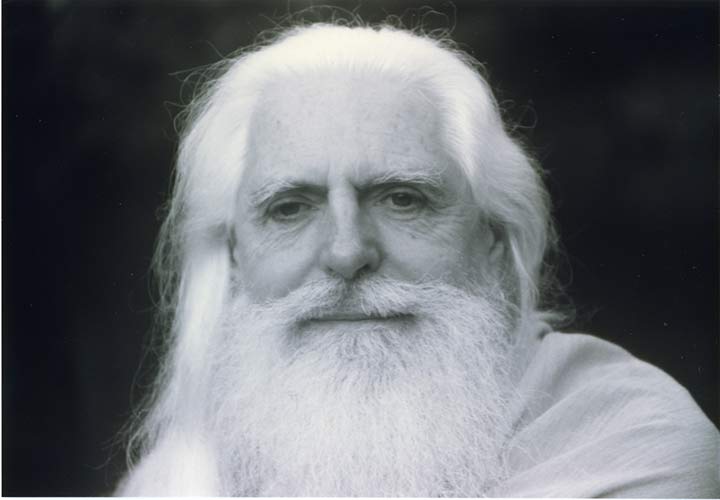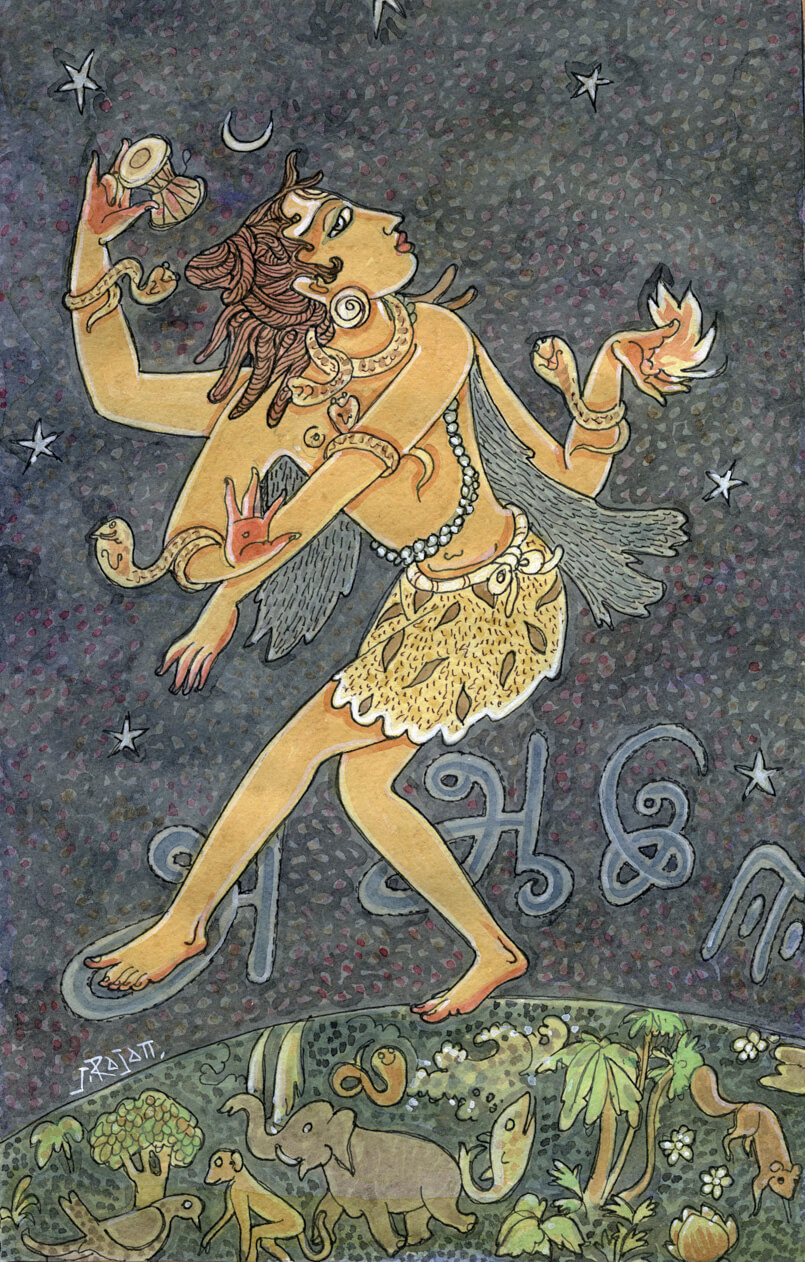The Holy Tirukural
TAKA is honored to be sharing one ten-verse chapter of Tiruvalluvar’s Tirukural each week for about two years. The 108 chapters will be accompanied by never-before-seen illustrations by the famed Chennai artist, S. Rajam. These page are taken for the book, Tirukural, Ethical Masterpiece of the Tamil People, was rendered into american english over a period of twenty-four years by two of Gurudeva’s designated successors. It was then translated back into modern Tamil by Tiru Mylvaganam of Jaffna, Sri Lanka, Tiru S. Kumarakulasingam of Surrey, England, and Dr. R.V. Subramanian of Pullman, Washington.
You can access the entire text, in Tamil and English here: Weaver's Wisdom
Dedication and Introduction (from the book)

THIS DEDICATION IS THREE-FOLD: first to honor my satguru, Siva Yogaswami, the lauded and proclaimed pontiff of the three million Jaffna Tamil peoples, the 161st successor in the esteemed line of the Nandinatha Sampradaya’s Kailasa Parampara, and to Tiru Mylvaganam, whom Yogaswami requested to squeeze grapes into juice for me with his own hands while I sat facing the devotees at the satguru’s left side in 1949. Mylvaganam was also present at the opening of the Sri Subramuniya Ashram in Alaveddy in the early 70s, and years later at the opening of the Subramuniya Kottam in Kopay, where he lives today. In recent years, despite the terrible conflicts in his country, this great man translated 800 of our English verses into modern Tamil which appear in this edition for the next generation. Long ago, Yogaswami gave a sadhana to him to memorize Tirukural and to recite some of the verses daily. Humorously, the youthful, Oxford-educated Mylvaganam said, “Swami, what if I forget some days?” Yogaswami said, “Then I will come as a centipede and bite you.” Mylvaganam has testified now, at 90 years of age, that he has been bitten forty times or more, always soon after he had neglected to recite the verses. He said, “I now see that Yogaswami was preparing me to translate for Gurudeva into modern Tamil all the verses I memorized so many years ago.” We also dedicate this book to Justice of Peace Tiru S. Subramaniam, who witnessed Satguru Yogaswami’s giving me, as a gesture of ordination, a slap on the back as I was leaving his compound one morning, by which he transferred his samskaras, or vital divine spiritual energies.
—Satguru Sivaya Subramuniyaswami

HERE NOW ARE THE PUNGENT OPENING VERSES, filled with foundational knowledge for the beginning novice and the advanced pandit. God supreme is explained in no uncertain terms, beginning with the primordial AUM, the Primal Sound of the universe, the A of many alphabets. Nothing would exist without the constant resonant resounding AUM, the Soundless Sound, the impulse of creation, ever emanating from the Cosmic Dance of God Siva, the source of all three worlds. Throughout the first ten kurals, one is encouraged to worship, to worship, to worship and thus soften negative karmas. Speaking of the Holy Feet, the weaver tells us of the ancient tradition so imbedded in Indian culture that even today touching the feet of a holy icon, a swami, sadhu, elder and one’s mother and father is a gesture of deepest respect.§
It is in these first four chapters that the weaver creates the warp, the strong, taut strands that stretch from one end of the loom to the other—as in the Vedas the priests’ mantras are described as the warp connecting this world with the heavenly Sivaloka—each strand’s color indicating a pattern of excellence yet to come. This first section of Tirukural tells us of the importance of God Siva’s Holy Feet, of rain, of renunciates and of virtuous living, called dharma. Here and in many chapters to come, reincarnation, punarjanma, is set forth in a most pragmatic way. In the tenth kural, the weaver tells of the boundless ocean of births that can be crossed only when one has become bound to Siva’s Feet.§
In chapter two, the author shows that in his day man was a vital, responsible part of ecology, inseparably entangled within it. This reverence for the environment forms another group of threads in the warp of our weaver’s pattern yet to be unfolded. The Abrahamic religions, upon which historically most scientists based their postulations, brought to mankind the attitude that man is not a part of ecology, but set apart from it, created to control and selfishly exploit it. This perspective has led to mountainous problems: pollution, waste and deforestation, extermination of whole species, drought and much, much more. The weaver speaks eloquently of rain in chapter two. And in verses throughout the book he says that good behavior of the people brings rain, hence wealth, and adharmic, or unvirtuous, behavior brings drought, hence poverty, leading to famine. A point is made that should rain fail, the worship within the temples and home shrines of God and the Gods would cease, and the joyous festivals, which during that time were many, would be held no more.§
Chapter three creates another warp on the weaver’s loom— the taut threads of the renunciate and ascetic—for in his day it was the sadhus, swamis and rishis who guided community leaders and individual seekers on the right path, and kept the monarch on the side of dharma, divine law and order. In verse 21 the weaver tells how the Vedas exalt the greatness of virtuous renunciates, and in verse 29 he explains that pious men who have compassion for all life are looked up to and respected as the priestly ones.§
Chapter four, “Asserting Virtue’s Power,” defines the fourth set of strands in the pale-colored, many-threaded warp on the weaver’s word loom. This completes the four-part set of lengthwise strands and forms the base of the cloth: the white threads of Sivaness; the translucent blues of rain, or akasha; the saffron-yellow threads of sacrifice and renunciation; and the violet rays of virtue. These are the four kinds of grace we must have in life: God, rain, holy ones and virtue.§
Chapter five begins the threads that crisscross the warp to form the weft. These are the rich-colored threads of virtue and wealth that the weaver uses to create the tapestry of life.§